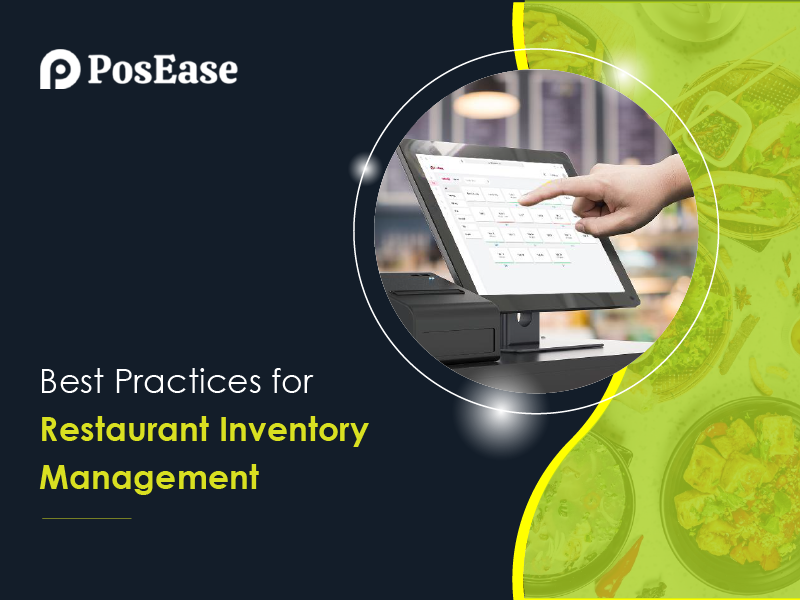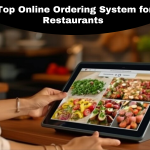Best Practices for Restaurant Inventory Management

Since food makes the bulk of the inventory in a restaurant and how the restaurant manages the inventory is essential to its performance. Here are the best practices and an online tracker that can help you reduce the waste of food and boost profits.
1. Benefits of restaurant inventory management
2. Best practices in restaurant inventory management
3. How to pick the right restaurant inventory management system
What is inventory management?
Inventory management helps businesses determine how much inventory to order at one time and when. Customers require enough product for them to satisfy demand without taking up excessive space in the warehouse. Restaurants also face the issue of selling foods that have to be quickly replaced prior to deteriorating. Inventory management for restaurants tracks food items that are brought in by suppliers and tracks them as they’re consumed and either lost or not used.
The management of inventory can be done using spreadsheets or manual counting. However, inventory management software can help make the process easier and allow you to more accurately track your items. In addition, it will display crucial financial and performance information and even re-order stock when it is at a certain level.
What constitutes inventory in a beverage and food service?
The inventory for the food and beverage sector includes everything you need to serve your customers, such as ingredients, food items, and other equipment such as pans and pots, as well as employee uniforms.
Examples of inventory found in a food and beverage service company include:
1. Food
2. Dry goods
3. Spices
4. Liquor and beverages
5. Cooking equipment
6. Linens
7. Worker uniforms
Experts suggest tracking inventory across different categories, such as liquor, food, and non-food items.
Why Restaurants Should Be Concerned About the Management of Their Inventory
The management of inventory helps restaurants maintain the proper quantity of food and ingredients available to ensure they are able to satisfy all customers, but it also prevents loss and spoilage. It is more probable for restaurants to be successful over the long term when they employ efficient management of their inventory.
Benefits of Inventory Management for Restaurants
An efficient inventory management strategy can help reduce the loss and waste of food. Work with vendors to reduce the cost of goods, boost profits, and ensure that customers are satisfied.
A few of the benefits are the following:
1. Loss of food is less: At restaurants, at least 10% of food purchased is wasted before reaching its customer. Restaurants tend to purchase large quantities at once, which leads to it spoiling before reaching customers. Proper management of inventory in food can significantly decrease this loss.
2. Lower cost of products: Food expenses are typically between 28% and 35% of the total expenses in restaurants. The cost increases when food gets lost or damaged.
3. Better vendor management: Restaurants can make use of inventory management software to better monitor their food purchases, which allows them to better control expenditures and payments to vendors.
4. Automated inventory supply: Inventory management can provide insight into the levels of food supply in a restaurant. The system also generates automated processes that replenish food supplies according to their needs and eliminate waste.
5. A happier customer base: Keep repeat customers coming back and keeping them satisfied by keeping the ingredients available for every dish that you offer.
6. Profits grew: The cost of all goods sold is an important factor that determines net profit. Management of inventory reduces waste, which decreases the price of the goods sold, which in turn improves profits.
Best Practices for Restaurant Inventory Management
Sorting and organizing inventory Setting automatic reorder points, setting security measures against inventory errors, and utilizing technology to forecast demand are a few of the key strategies to manage your inventory better.
Here are some of the best techniques.
1. Organize inventory: Labels on shelves aid staff in finding items quickly. It also makes restocking the shelves faster and easier. Determine the items most commonly used and place them in one place that is easily accessible.
2. As minimal as you can: Make use of an inventory management system to maintain just enough inventory to please customers while not deteriorating or occupying space that could be used to purchase additional equipment or perhaps tables to accommodate customers.
3. Check the rate of sale-through: Sell-through rates are an effective way of tracking how much of an individual product or category you sell during any given timeframe. For instance, if you buy 100 steaks over one week and sell 60 of them in total, that would give a sell-through rate of 60%. Track this statistic across multiple products, such as bread, meat beer, and bread products as well.
4. Monitor the entire inventory: Monitor every item that the restaurant utilizes, from potatoes and steaks to napkins and uniforms for staff. The frequency of counting inventory can vary based on the item. For instance, you could keep track of perishable items every week while others, such as uniforms, are kept annually.
5. Safeguard against mistakes: You might want to consider putting two employees on the inventory team and asking them to check their work. It is also recommended to prepare an inventory list that reflects where items are located on the premises for easy recording.
6. Accountability of employees: Get employees trained on how to track all drinks and food that are consumed and the cash that is brought in. Let them be components of your solution, and comprehend the various processes that are in place to track inventory. If you’re using a POS system, make sure that managers have permissions to supervise employee activities as well as inventory reports.
7. Automated reordering: Inventory management software can assist you in automating reordering whenever the supply or stock reaches the desired level.
8. Make use of technology to predict demand: Utilize inventory management software, or POS, to predict demand based on various factors, including past trends, seasonality, and various other conditions that are preset.
The benefits of inventory management systems for restaurants
Software for managing inventory is a great help in managing your inventory at your eatery. Apart from that, they can provide information on sales and expenses that manual tracking cannot offer. Restaurant management systems can connect back-end accounting, POS, and inventory on a single cloud-based platform.
1. Real-time inventory visibility: Inventory management software is able to integrate into your POS to keep track of the smallest order for a meal and how it affects the inventory.
2. Simple tracking of sales: Software for inventory that is integrated into a POS system gives in-depth insight into the products that are the most sought-after and profitable.
3. Promotions that track: Restaurant owners can utilize inventory software to measure the effectiveness of marketing loyalty programmes, promotions, and other promotions.
4. More efficient and effective tracking: The staff can make use of inventory software to effectively and precisely monitor stock.
5. Automating purchases: Utilize software to automate the process of placing orders whenever items reach a certain amount.
6. In-depth, detailed reports to aid in making decisions: Inventory software offers KPIs along with other information about restaurants that helps you make better business decisions and boost profits.
What is the best software for inventory management in your restaurant?
Consider how big your establishment is, the other software you will need to integrate, and the cost when you’re considering buying the inventory control system.
1. Think about the scale as well as the complexity of the operation: If you manage four restaurants that serve 4,000 patrons daily, You’ll have diverse and more intricate requirements than a smaller restaurant that only has 100 customers visit its doors. Inventory management software is beneficial for any restaurant; however, smaller businesses may require only simple software.
2. Review the way your POS and the inventory management systems integrate: If you have an existing POS system, ensure that it’s compatible with the latest software for managing inventory. In the event that your POS system isn’t able to track inventory, you should consider upgrading to a POS system that has inventory management.
3. Review the most popular characteristics: Ask these questions about general features, highlighting those that are most pertinent to your requirements:
A. Real-time tracking: Does the system make adjustments to inventory for each order placed by a customer?
B. Automated purchasing software: does it allow the creation of buy orders to suppliers when an item begins to run out?
C. Reports and financial analyses: Do the platforms monitor how each item is sold and which items are the most profitable?
D. User-friendliness: Is the system user-friendly and easy to comprehend for staff at restaurants that are constantly changing?
E. Scalability: Can you change systems as the number of restaurants or groups of restaurants expands?
4. You should consider whether you’d like an in-house or cloud-based solution: Cloud-based options allow for inventory tracking across multiple devices and across various locations of restaurants.
5. Take into consideration the cost: Consider the price of a software system in relation to how big your company is. Do not purchase the software you need that’s more complicated and expensive than what you require.
How PosEase can assist restaurants with inventory management
Modern restaurants require an inventory management system to track sales, expenses, and other key aspects of running their business efficiently, which will reduce expenses and boost efficiency while improving earnings. NetSuite can assist restaurant owners in managing their businesses effectively and increasing earnings, regardless of whether they need an entirely new solution to manage inventory or simply an integration into an existing system.
PosEase Hotel and Restaurant Management Software provides an innovative yet lightweight solution for franchisors, restaurateurs, and hospitality companies to increase revenues and cut expenses. Built upon an integrated cloud platform that houses back-end financials and inventory data, businesses can expand operations by adding features they require, such as franchising point-of-sale system integration or commissary management, to meet changing business demands.
Search
Category
Recent Posts




